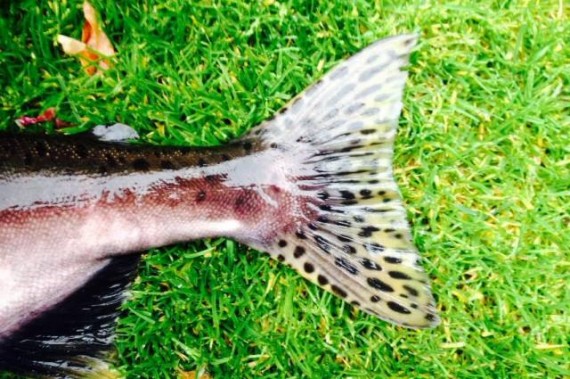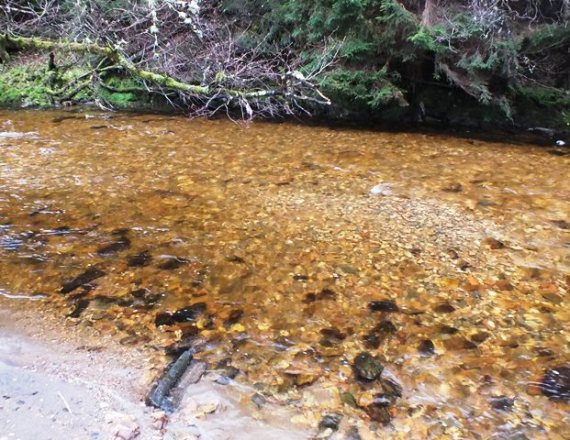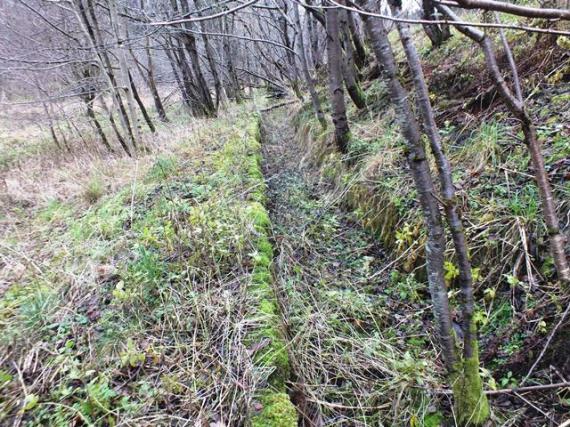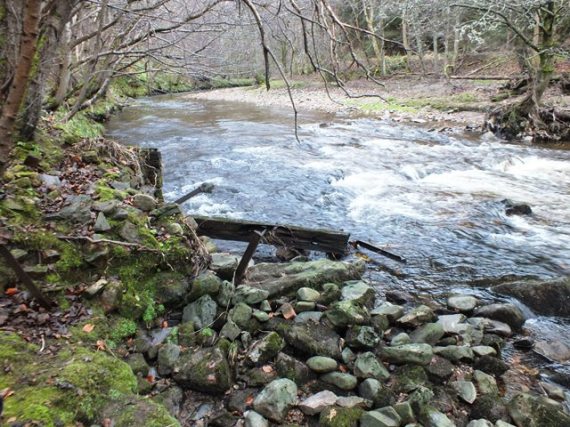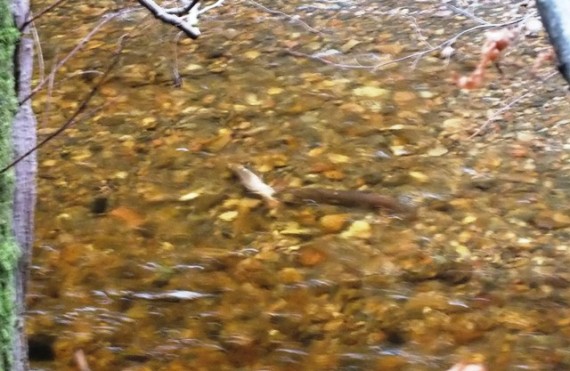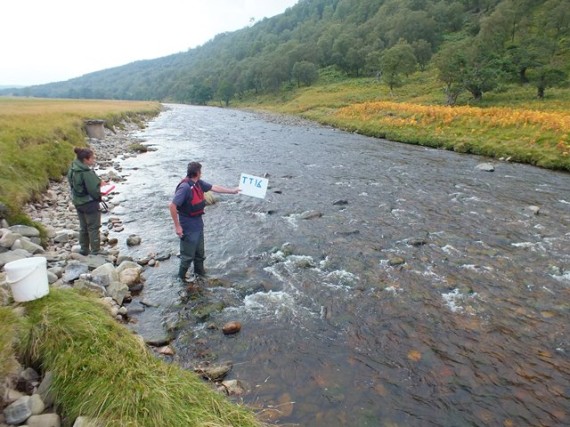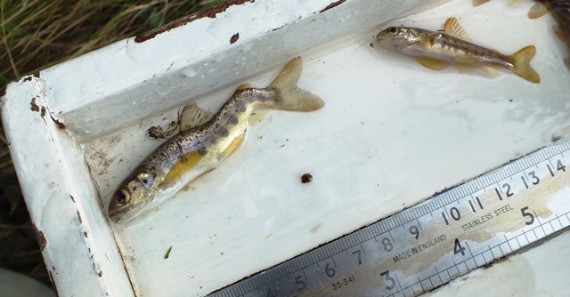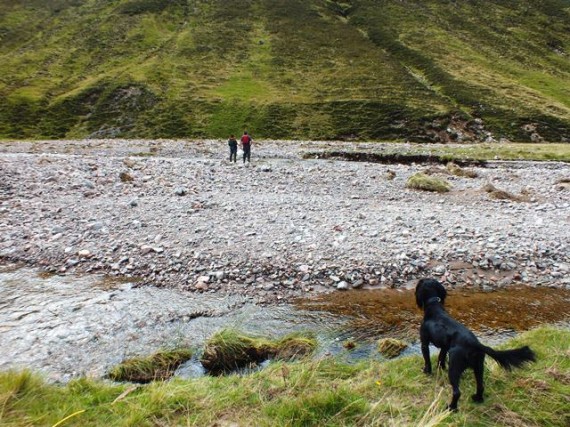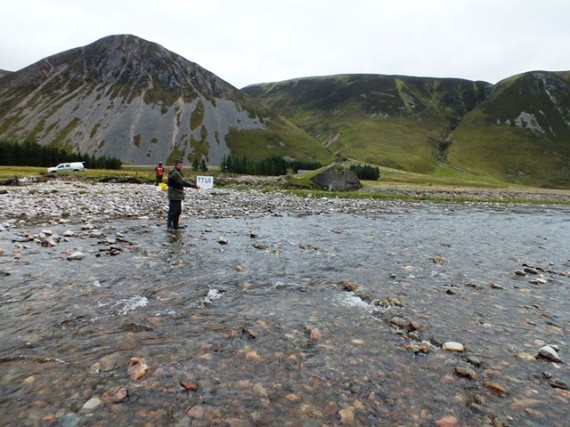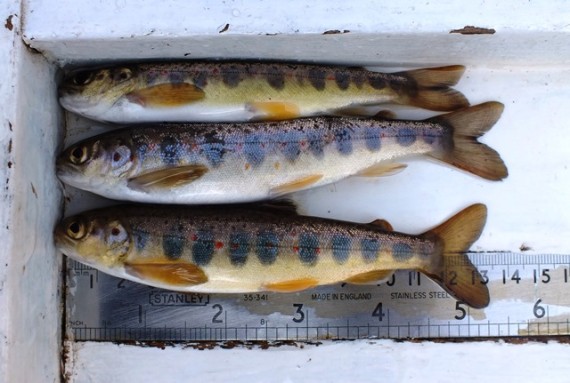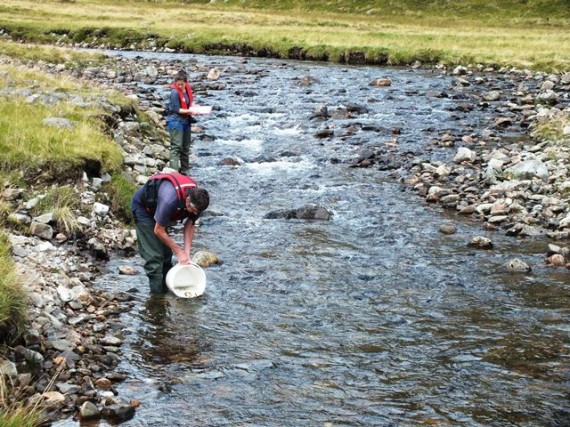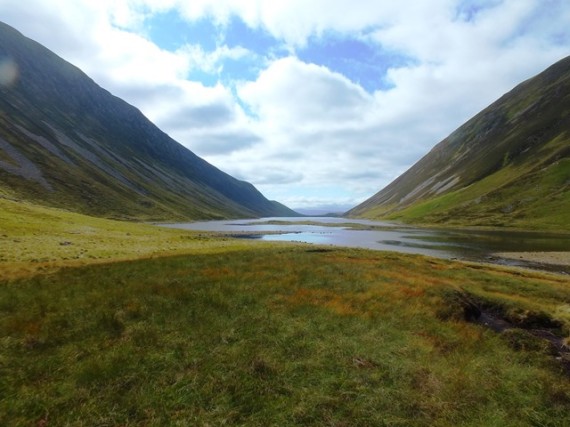Over the last two years we have assisted Marine Scotland Science with the maintenance and download of some of the Spey catchment temperature loggers. The loggers are downloaded twice a year, in the spring and autumn with the data emailed to the Freshwater Lab in Pitlochry.
Steve trying to unbolted the temperature logger on a chilly day in the River Fiddich. Some of the loggers are bolted to iron bars hammered into the riverbed (including this one), whilst others are tethered to land anchors on the riverbank.
Faye Jackson has coordinated this programme to date as part of her PhD. Faye, in conjunction others, has just published a paper on a modelling approach to predicting summer temperatures in the River Spey catchment. The paper investigated which factors were most influential for measurements such as the minimum, and maximum, 7 day average temperatures and the mean daily temperature. See Jackson FL, Hannah DM, Fryer RJ, Millar CP, Malcolm IA. Development of spatial regression models for predicting summer river temperatures from landscape characteristics: Implications for land and fisheries management.
The paper shows that the factors likely to be predictors of the 7 day average minimum and mean temperatures were elevation, % riparian woodland cover and gradient. The relationship for all three was negative e.g. higher altitude generally means lower temperatures. No surprise there although keep reading for some interesting findings. It was the same relationship for woodland cover and gradient with higher levels of woodland cover and steeper gradients resulting in lower minimum and mean values. Interestingly the riparian woodland effect was only noticeable if the woodland cover exceeded 40%, a relatively high degree of cover.
The Spey is a well wooded river. Image from publication (source given above).
For Tmax, or the maximum 7 day average, river width and a factor called the River Network Smoother (RNS) - the details of which I won’t bore you but you can read all about it in section 2.4.2. of the report, but it is about the relationship of one part of the river with another! It was surprising to read that the percentage woodland cover was not one of the main factors affecting maximum temperature in this study.
The areas of the catchment where the highest maximum temperatures are predicted are at opposite ends of the catchment; the lower mainstem and above Spey Dam. That the high altitude reaches above Spey Dam should turn out to be one of the areas most prone to prolonged high temperatures is perhaps surprising, given its high altitude, but it is a wide and shallow river up there, and virtually devoid of any riparian trees cover. The paper suggests that woodland cover is most effective where channel widths are narrow, the gradient low and that the direction in which the river runs would maximise the impact of any shading. Presumably east-west orientation would be best with shading on the south bank.
The upper reaches of the Spey above Spey Dam. Salmon are found here, although not in high density due to the hydro scheme below. It is utterly devoid of native woodland and during a hot spell it is easy to see how the water temperatures could soar.The highest temperature recorded in 2015 in the Spey logger network was in one of the upper Spey sites.
If the salmon population above Spey Dam could be restored, and that is possible given the will, it should perhaps be accompanied by a programme of tree planting in the most beneficial areas. Despite the papers conclusion that tree cover is not one of the most important factors influencing maximum temperature there are other benefits from tree planting, such as tree litter and fish cover - its not all about shading.
The post Controls on river temperatures in the Spey appeared first on Spey Fishery Board.
Spey Fishery Board


